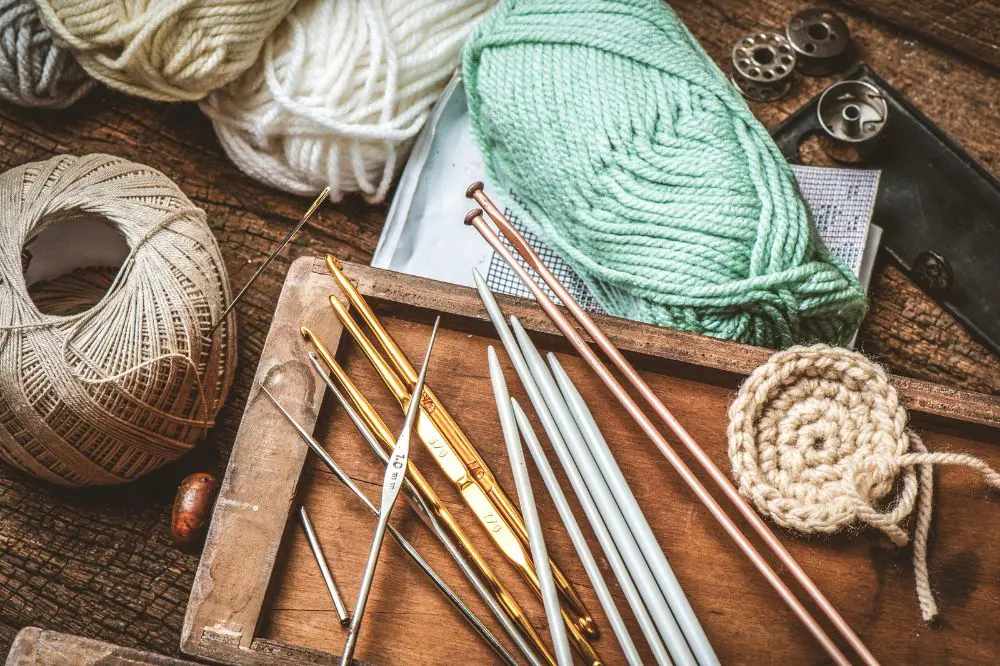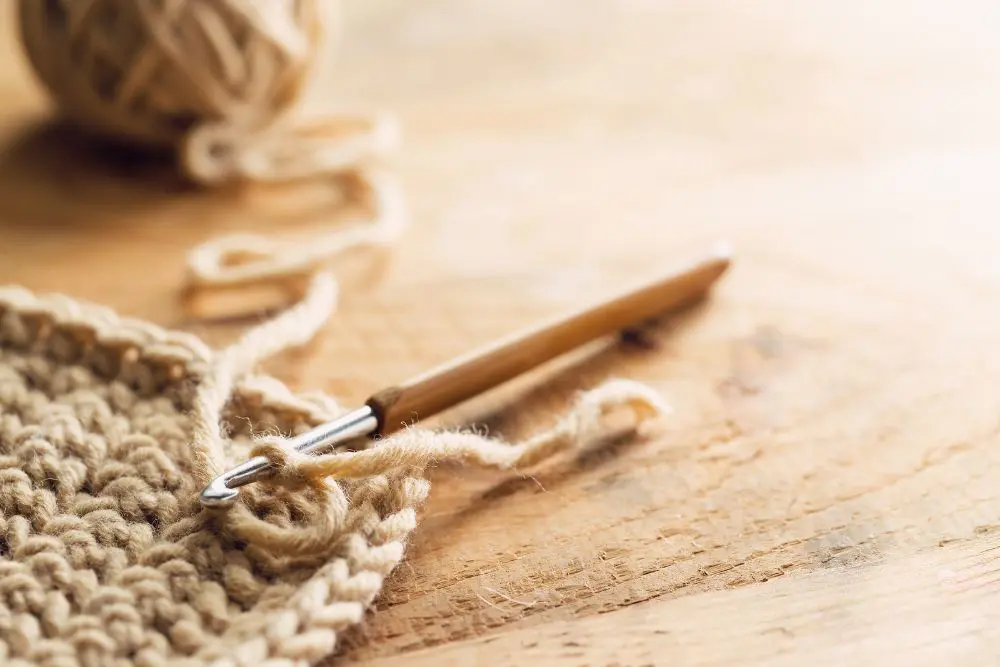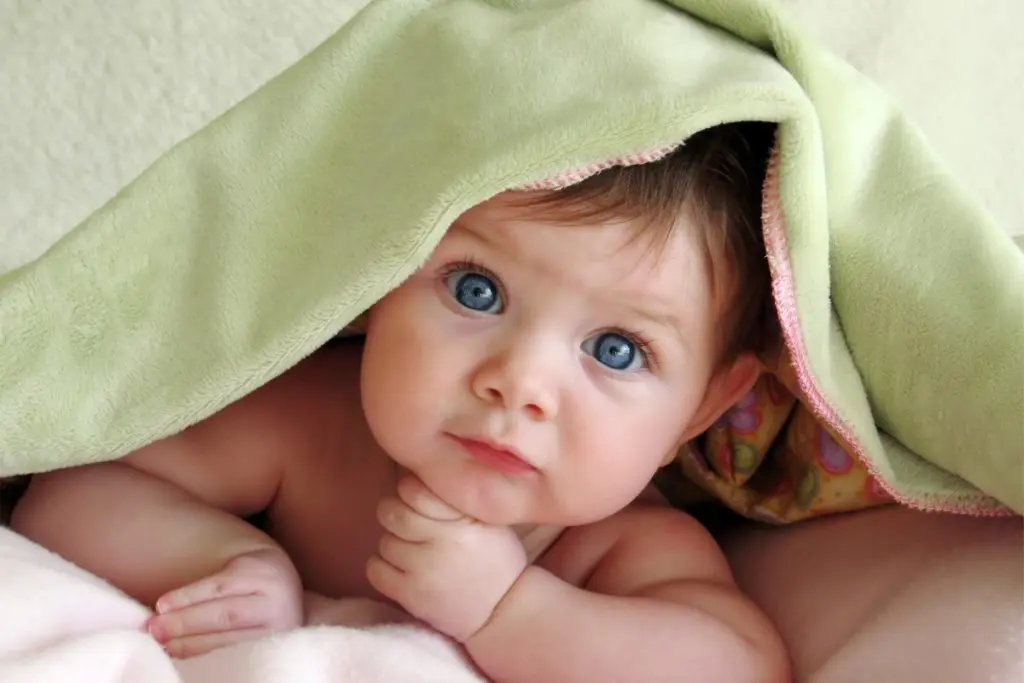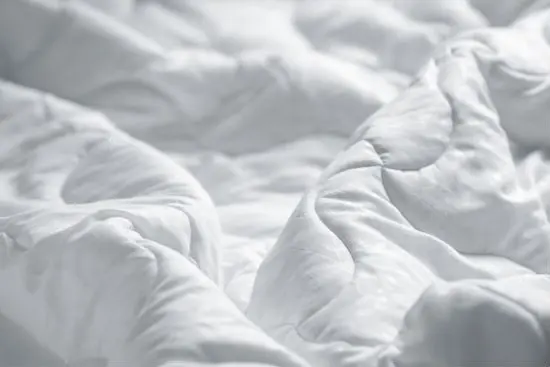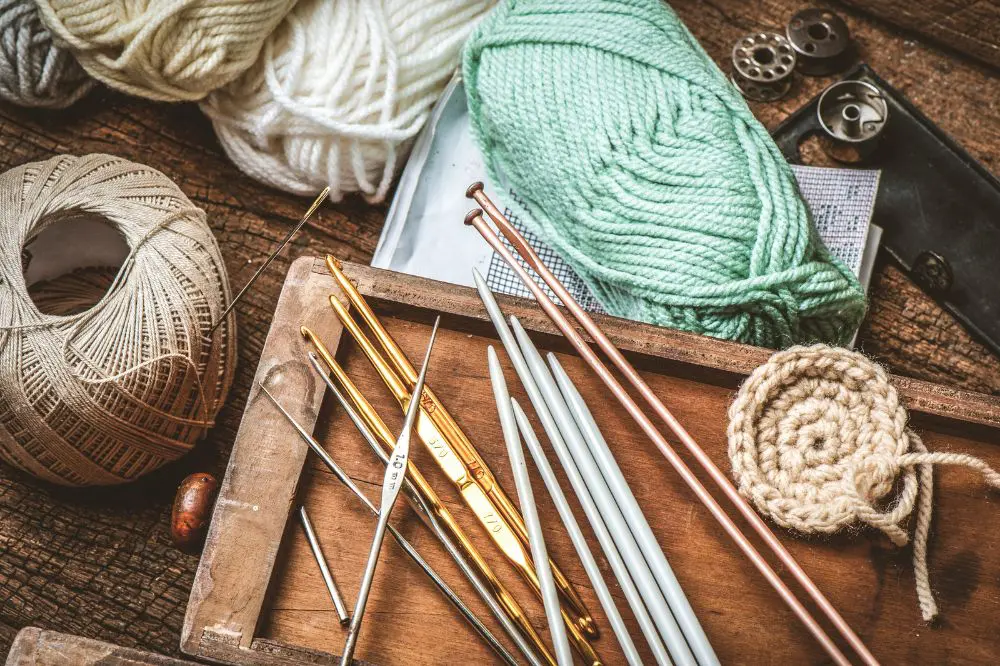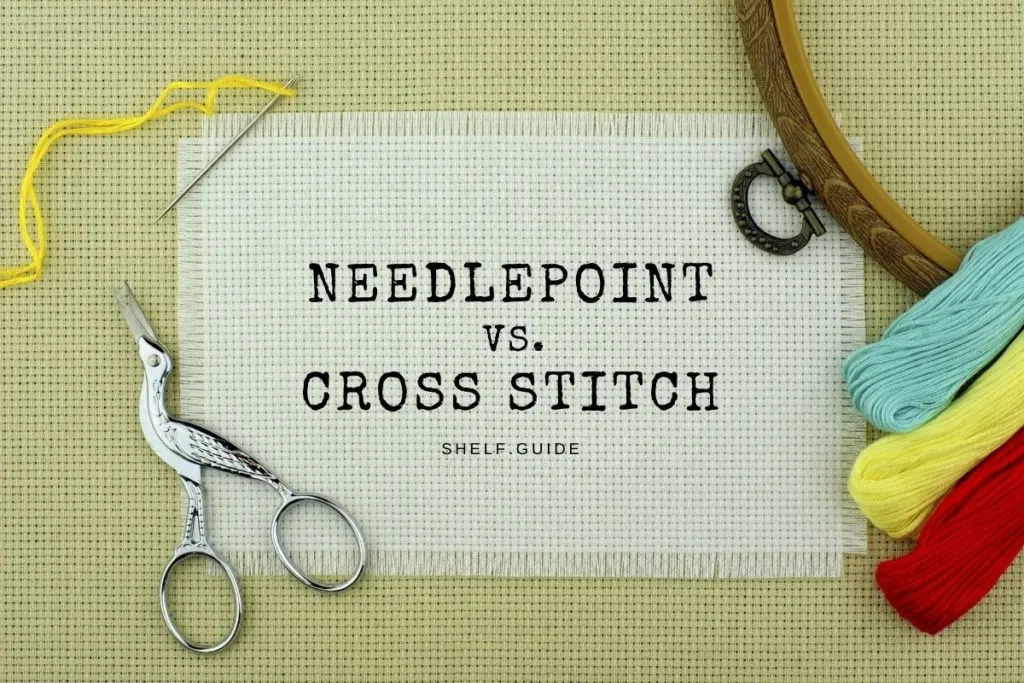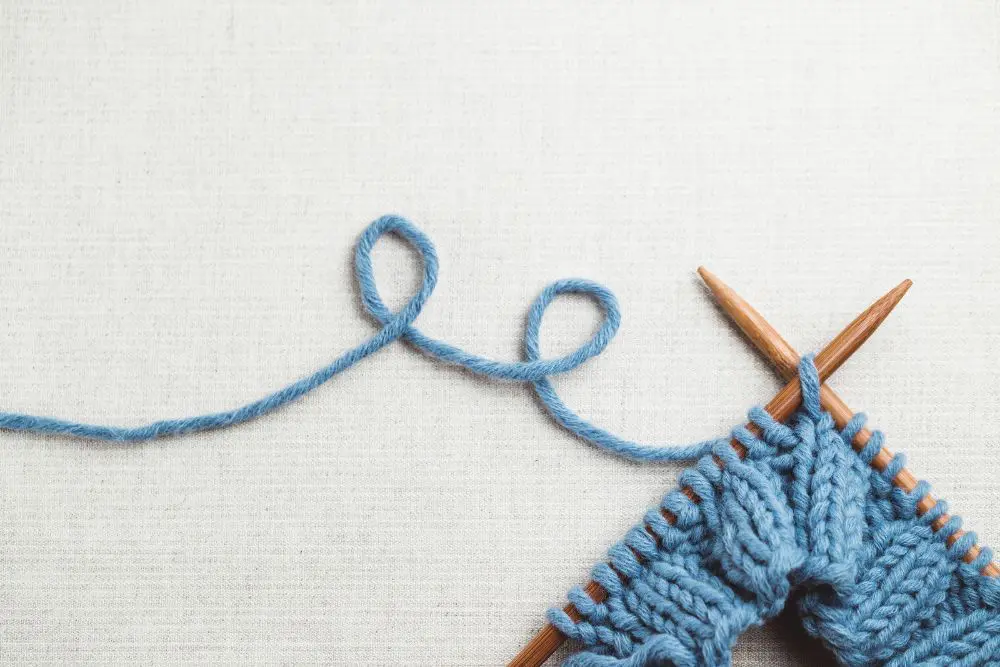Knitting vs. crochet- the fiber arts throw-down we’ve all been waiting for. If you’re reading this, you may be uncertain about the differences between knitting and crocheting. Don’t worry — it’s easy to get confused. After all, both are used to make soft blankets, handy pot holders, and cute little baby beanies. Not to mention, the finished products look pretty much the same.
So what’s the difference? And which is easier?
The answer, unfortunately, is not so clear-cut as just one or the other. Knitting and crocheting are two distinct methods of weaving threads together, and the best way to learn which is easier for you would be to try them both.
In this article, we’ll discuss the differences between knitting vs. crochet and look at what each one involves. Let’s get started.
Knitting vs. Crochet: An Overview
As mentioned, knitting and crocheting are different methods of weaving threads together.
Knitting
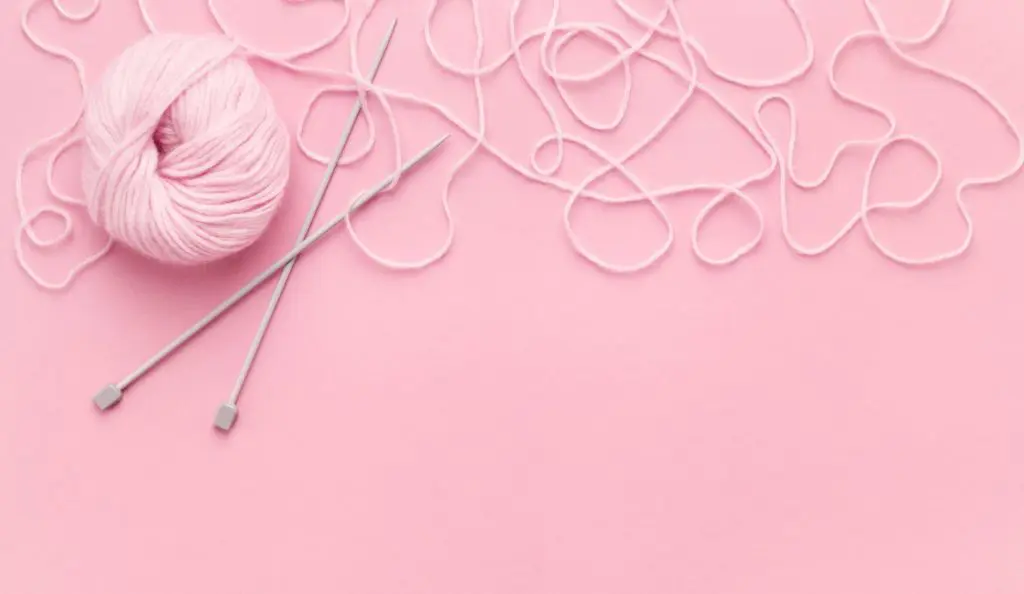
To begin knitting, you need yarn and a specialized tool called a knitting needle. These tapered needles are used to create stitches that ‘stack’ together. In other words, you snake several stitches around your needle before closing a group of them simultaneously.
There are two primary stitches involved in knitting, making learning the basics a bit easier.
Pros of Knitting
- Simple: there are two basic stitches you’ll need to make most anything, with some more obscure ones you can learn if you want to.
- Easy to see: since all active stitches are looped around one of your needles, you can clearly see each one to make sure you don’t skip or drop any
- Generally less expensive: knitting uses about a third less yarn for the same amount of project
Cons of Knitting
- Less flexible: with one direction of movement, knitting is more limited in what it can be used to make.
- Higher risk: each stitch is looped to the ones before and after it, meaning a single dropped stitch can cause the entire project to unravel.
Crochet
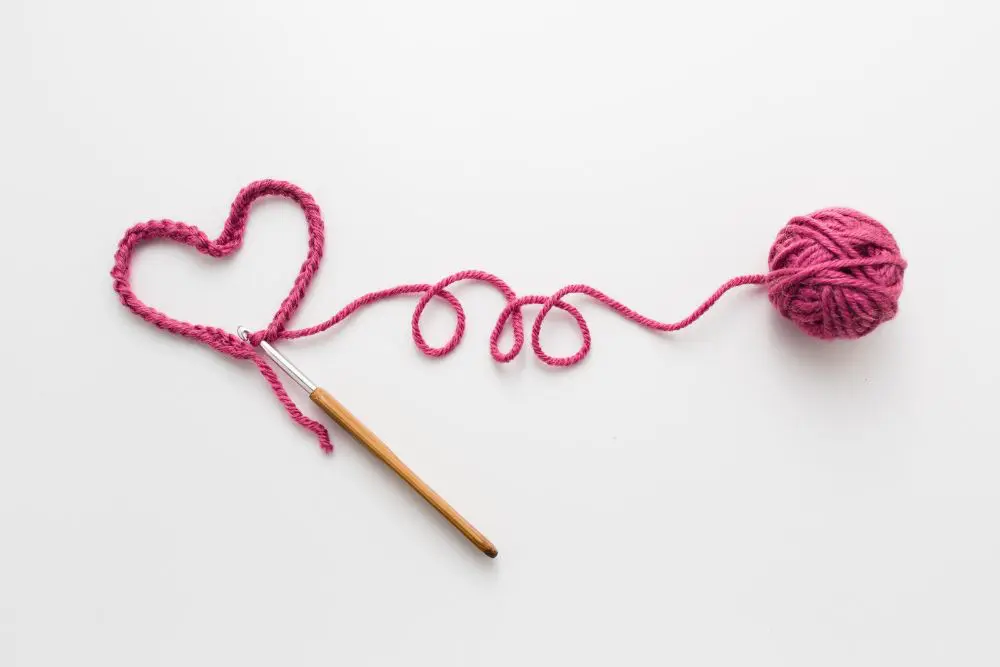
Crocheting utilizes crochet hooks (little handheld instruments with hooks at the end) to interlock stitches of yarn together. When crocheting, each stitch must resolve, or close, before the next one begins.
Crocheting is extremely versatile, and you can make all kinds of unique projects with this medium.
Pros of Crocheting
- Fast: crocheting generally goes quicker than knitting.
- Easy to save: only one stitch is active at a time, making it easier to recover a dropped stitch, and one dropped stitch isn’t likely to unravel the entire project.
- Creative flexibility: with more stitch types and only one live stitch, you have a lot of directional and visual flexibility in what you create.
Cons of Crocheting
- A lot to learn: there are five basic stitch types (and a bunch of combination stitches), and most projects will use more than one stitch, meaning you’ll need to learn more to get started.
- Needs more yarn: crocheting (on average) uses about 33% more yarn than knitting for the same size project.
Knitting vs. Crochet: An In-Depth Comparison
If you’ve ever seen someone knit or crochet a blanket, you probably feel like the process has to be some kind of complicated sorcery. In reality, they’re both pretty simple once you get the hang of them.
So now, let’s take a magnifying glass to compare knitting vs. crochet.
1
Supplies
The first thing you have to do, whether knitting or crocheting, is to get the right materials. For knitting, that means you’ll need a pair of knitting needles. For crocheting, you’ll need a crochet hook. You’ll also, of course, need some yarn and a general idea of what you want to make.
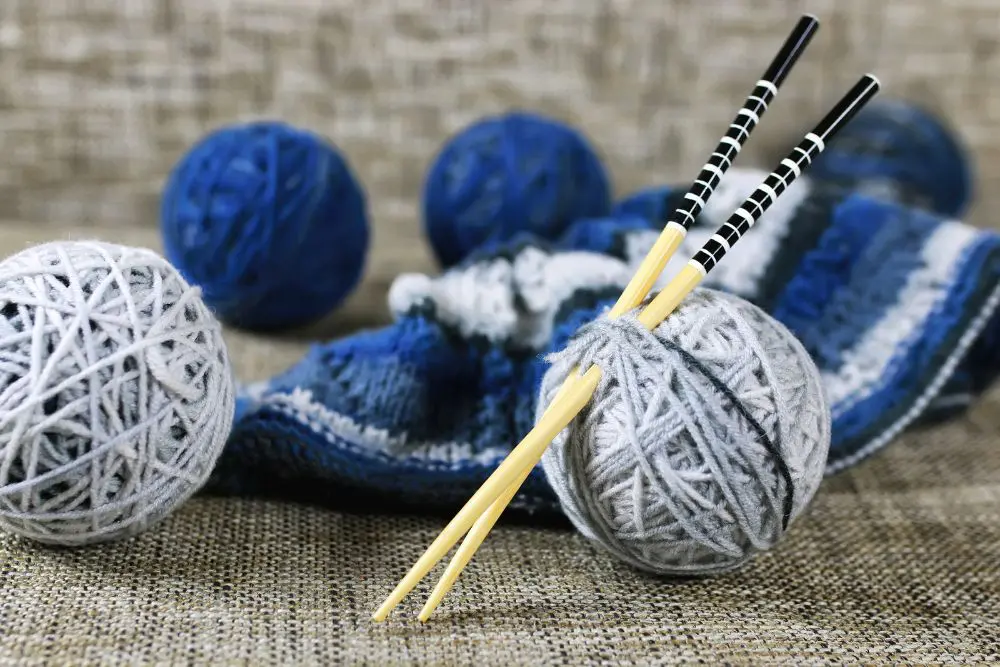
If you’re just starting, we recommend you start with a larger crochet hook or set of knitting needles. This will make it easier for you to see the individual stitches, which will make it easier to work with.
And while I know the big and chunky soft yarns are calling to you, you’ll want to save those for when you know what you’re doing. For your first go-round, try a medium-thickness yarn free of frilly, dangly bits that could get in the way and confuse you.
On average, crocheting will use about 33% more yarn than knitting to create the same volume of product, so you’ll want to factor that in when you buy your supplies. Most yarns have guides on the packaging that tells you how much you’ll need to knit or crochet individual projects, like a scarf or sweater, so be sure to read the labels.
While crochet hooks and knitting needles are mostly similar in price, crocheting will require more yarn, making it the marginally more expensive method.
Winner: Knitting
2
Getting Started
Now that you’ve got your supplies, you’re ready to sit down and start creating!
With knitting, that means you’ll need to make a slip-knot around one needle. Then you’ll cast on your first stitches, which is just a fancy way of saying you’ll make special loops around said needle. The number of stitches you cast on depends on how wide you want your knitting to be.
Let’s say you’re just looking to make a simple scarf. To get a respectable width (assuming you chose a medium-thickness yarn), you’ll probably want to cast on about 15 to 20 stitches.
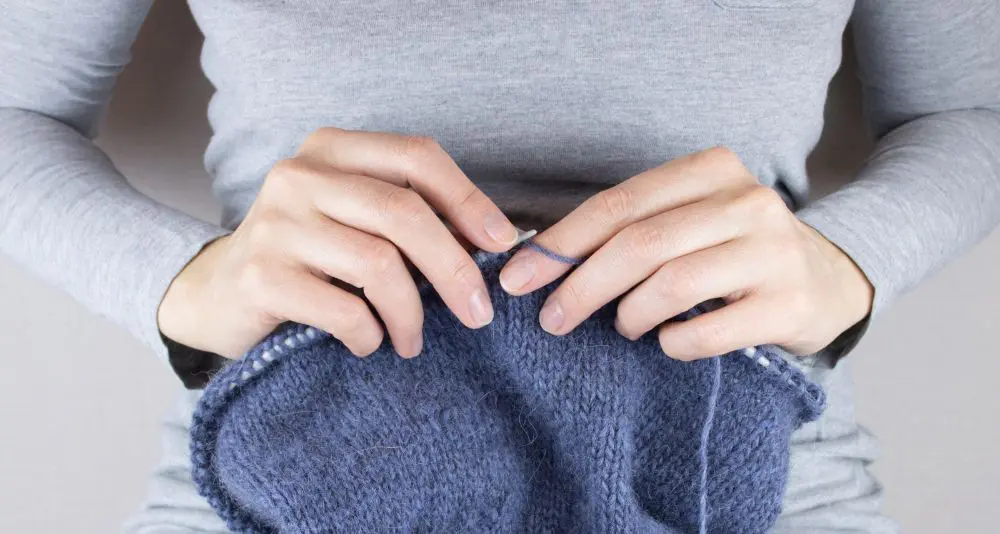
To start crocheting, you’ll also need to make a slip-knot — but instead of making it around a knitting needle, you’ll instead hold it in one hand. Next, you’ll make your foundation chain, which is just a fancy way of saying you’ll use your crochet hook to pull a loop through the slip-knot, and then another loop through that first loop (and so on, until you have the width you want).
The methods of getting started for both crocheting and knitting are pretty straightforward.
Winner: Tie
3
Ease of Process
With your first row of stitches in place, it’s time to get down to business.
To continue knitting off the loops you cast, you’ll need to transfer the stitched needle to your non-dominant hand. Then, in your dominant hand, you’ll take the bare needle and use it to pull a loop of yarn through each stitch; the new loop will stay on the needle in your dominant hand, and as you go, you’ll slowly transfer all your stitches to the other needle. Once you get to the end, you’ll switch the now-covered needle to your non-dominant hand and the now-bare needle to your dominant hand, and do it all again.
The challenge lies in keeping your yarn pulled consistently taut while you work, so your stitches come out even. But not too taut, which makes the loops impossible to work with.
The next step to crocheting is to hold your foundation chain in your non-dominant hand and your crochet hook in your dominant hand. You’ll use the hook to pull loops of yarn through each foundation stitch as well as the loop before it, making sure they are all connected. When you get to the end of the row, you turn the entire thing around and do it again.
The challenge here is twofold: like knitting, you’ll need to keep your yarn pulled taut, but you’ll also need to make sure you don’t skip or lose a stitch. All the stitches in knitting are wrapped around the needle, making them easy to see and go through one by on. The stitches in crocheting are not wrapped around a needle, and you have to find each one by sight so you can slip the crochet hook in to pull a new loop through.
Winner: Knitting
4
Risk Factor
While it’s important to catch every stitch, whether you’re knitting or crocheting, a dropped stitch looks different between the two methods.
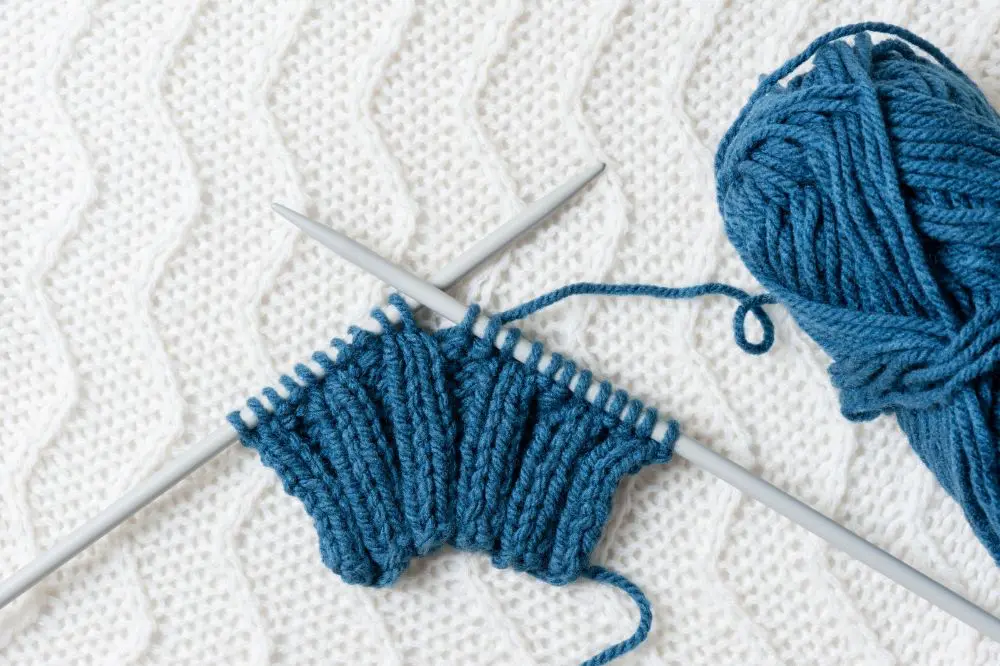
In crocheting, it’s easy to skip a stitch since you have to find each one by sight (and they easily get buried). But, if you do skip a stitch, your final product won’t wholly unravel; usually, you’ll just end up with a little hole (but the scarf or blanket will hold together).
The same is not true of knitting. All the stitches in knitting sit along your needle, so you can pretty easily see them and make sure you don’t drop one. That said, a lost stitch while knitting will most likely lead to your entire project unraveling.
So, even though it might be harder to catch all your stitches in crochet, it’s a safer bet than a dropped stitch in knitting, which could spell your entire project’s ruin.
Winner: Crochet
5
Casting Off
Once you’ve crocheted your last stitch and knitted all you can knit, it’s time to tie everything off so your hard work will last for years.
Casting off in knitting is a little complicated. You’ll want to knit the first two stitches of a new row like you’ve been doing, but before the third stitch, you’ll take your stitched needle (in your non-dominant hand) and grab the second stitch you just made from the bare needle. Then, you’ll bring it back to the first needle, going over the first stitch. You’ll knit the entire row like this, pausing between each stitch to draw the new stitch over the one before it, until you end up with only one stitch left on your needle. Then, you’ll cut the excess yard and draw it through that lone, remaining stitch, weaving it through other stitches until it’s invisible.
Like I said — a little complicated.
Crocheting, on the other hand, is incredibly easy to cast off. For the final row, you’ll do what you’ve been doing, except you’ll pull an extra loop of yarn through the stitches you make, closing them off. When you get to the end of the row, you’ll tie a knot and weave in the ends through the rest of the stitches to hide them, and that’s it! No matter which style of stitching you’re using, the rules are the same.
Winner: Crochet
6
Learning Curve
Whichever you’re interested in, you’ll have to learn how to do all the steps we just discussed, and you’ll have to learn them for all the different kinds of stitches.
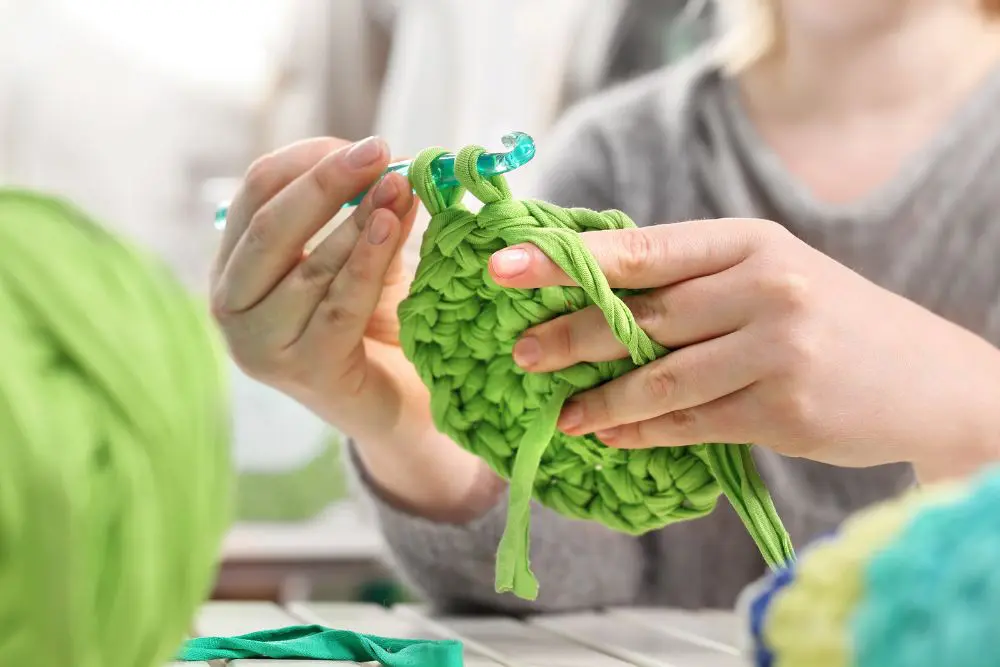
With knitting, there are two basic stitches: the knit and the purl. Most knitting projects can be made using these two stitches, whether exclusively or together. There are also some other, more obscure knitting stitches you can learn to add more variety to your arsenal.
Crocheting, on the other hand, has five basic stitches:
- slip stitch
- single crochet
- half double crochet
- double crochet
- and triple crochet
There are many other stitch types used in crochet, but they are all some combination of these five and are generally not too hard to learn once you’ve got the main five down.
Winner: Knitting
7
What You Can Make
The final consideration in the battle of knitting vs crochet is deciding what you’d like to make.
While knitting may have less of a learning curve than crocheting, that ease comes at a price. With only two basic stitches, there’s less range of what you can accomplish. Knitting is also limited to one-directional movement, which narrows the possibilities.
With its five basic stitches, crochet offers a lot more flexibility. You can switch between the different stitches or combine some to create all kinds of patterns and textures. And since you’re only using one crochet hook, you can move in whatever direction you want. The only limit to what you can create is your imagination.
Winner: Crochet
Crocheting vs. Knitting: The Verdict
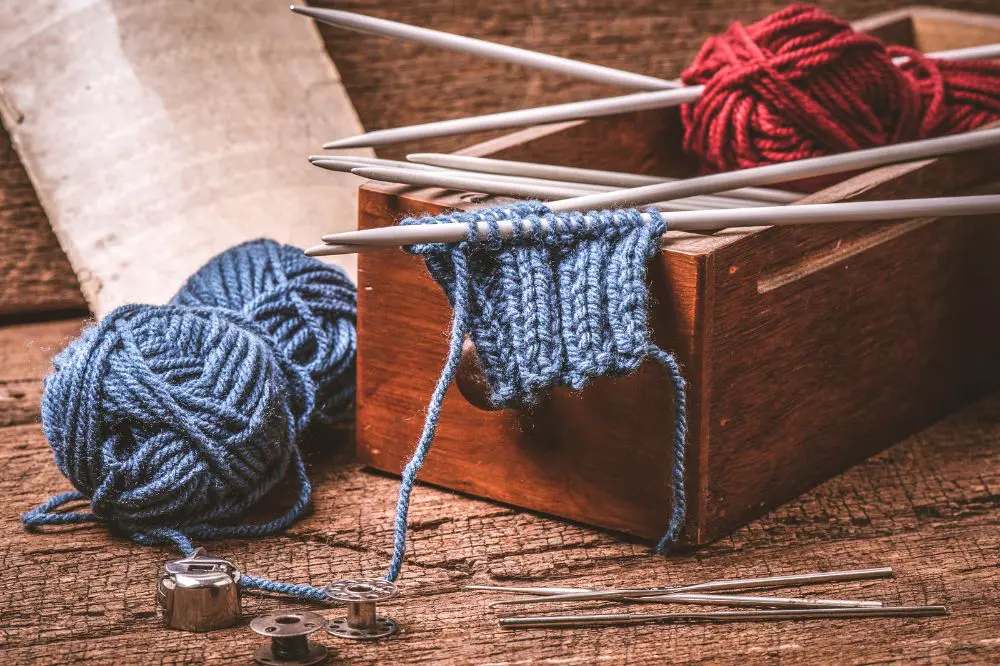
So, what’s the answer between knitting vs crochet? Is knitting or crochet better and easier?
If we’re going by the points we’ve debated in this article, crochet is the narrow winner. Knitting uses less yarn, meaning it will be, on average, a little cheaper. But it but generally takes longer than crocheting.
Knitting is more straightforward with two basic stitches, but crochet, while more complicated with five basic stitches and multiple combination stitches, has more creative flexibility. It’s much easier to ensure you catch every single stitch in knitting, but it’s also much more disastrous if you do miss a stitch.
So honestly, it depends on you.
Are you confident in your ability to catch every single stitch while knitting? Would you rather the security of not losing your entire project if you miss a stitch while crocheting? Would you prefer to use two needles and both hands to form your stitches, or are you more of a one-hander? Are you wanting to make a simple scarf and maybe a blanket, or are you looking into complicated compound projects?
No matter which you choose (or if you decide to learn both), you’re on your way to making your own scarves, blankets, hats, and tea cozies. Maybe even clothes, if you’re feeling adventurous!
Good luck, crafters!
Further Reading
